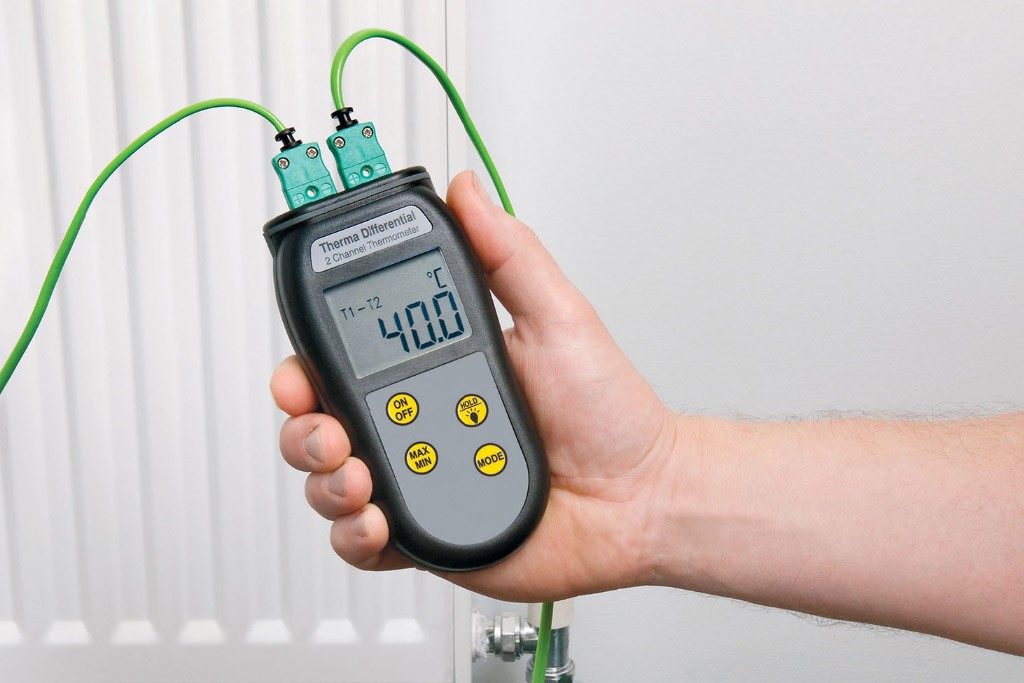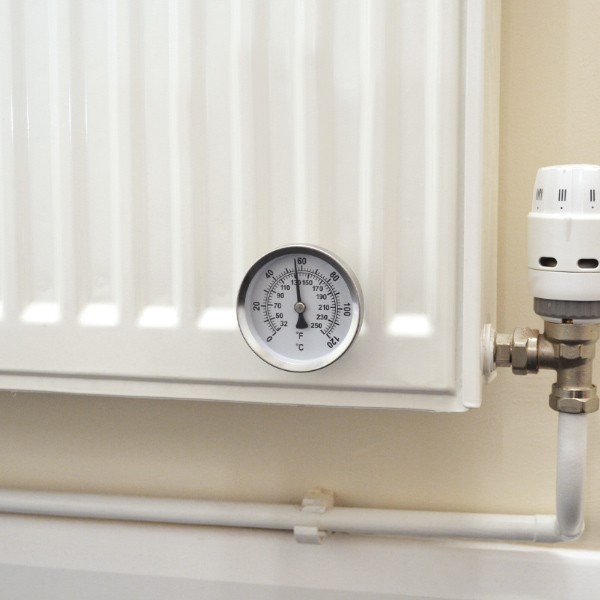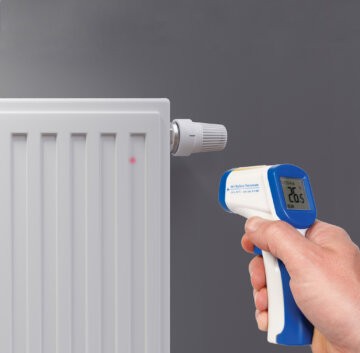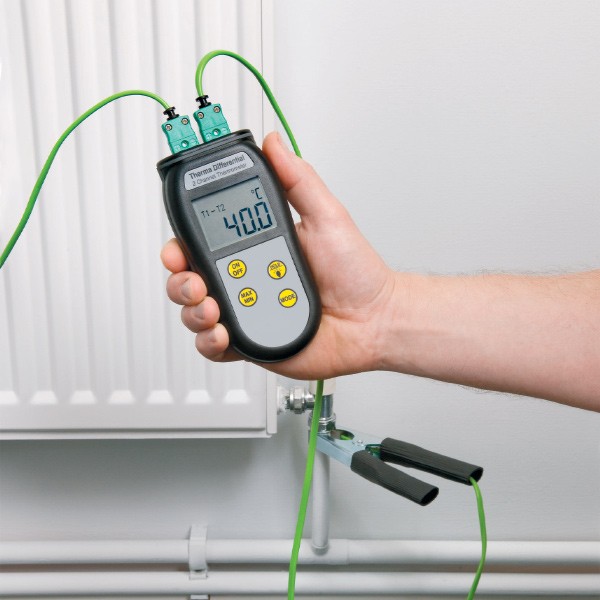3 Best Thermometers for Radiators & Pipes

Monitoring surface temperatures is an important part of managing heating systems. This can include radiators, pipes, and hot water cylinders.
There are a few different ways to measure these temperatures, and finding the best one for you can depend on factors such as budget, time constraints and the accuracy required.
Here we’ll explore the three main types of radiator and pipe thermometers and the benefits of each.
Magnetic radiator thermometers
Best for: Continuous monitoring
Price: £20.40

Magnetic radiator thermometers are simple dial thermometers which affix to the radiator’s metal surface. Great for applications like hospitals or nursing homes where users may want to continually monitor radiator temperatures for safety, they can be left in place permanently.
They’re also a good economical choice for home or business owners looking to ensure their heating systems are working correctly, or HVAC engineers carrying out radiator balancing. The limitations of these budget devices are that they will have a slower response time and accuracy than their more expensive counterparts.
Shop the Magnetic Radiator Thermometer
Infrared thermometers
Best for: Quick checks
Price: From £31.20

Infrared thermometers are a quick and easy way of measuring surfaces, particularly ones that are very hot or difficult to reach, which is why many HVAC engineers favour this method of checking pipe and radiator temperatures.
If used incorrectly, it’s very easy for infrared thermometer readings to be inaccurate, so we always recommend using them with care. Ensure the lens is kept clean and the thermometer is set to the correct emissivity (0.55 for household radiators). When taking the reading, make sure to stand straight on and as close as possible to the surface being measured.
If taking the temperature of hard-to-reach surfaces, choose an infrared thermometer with a laser pointer so that you can make sure it is aimed correctly. Some infrared thermometers also feature a thermocouple socket for connecting probes, like the RayTemp 8. This means you could use the infrared for surface temperatures, and choose separate probes for other applications, such as air probes or pipe probes. This way, you don’t have to invest in two separate instruments.
Shop all infrared thermometers
Surface probes
Best for: High-accuracy pipe/radiator temperatures
Price: From £27.60

Choosing temperature probes designed specifically for your radiator, pipe, or other heating application will gain the most accurate result. There are many options available.
The ETI Ribbon Surface Temperature Probe is popular for its unique flat ribbon technology, making readings fast and accurate. If you’re looking to set your probe in place over a period of time, the Magnet Surface Temperature Probe is a great option.
For pipe temperatures, HVAC professionals can choose between ring-shaped probes or clamp probes. Both enclose the pipe for a more accurate reading.
All of these probes will need to be paired with a type k thermocouple thermometer. Hard-wearing thermometers like the Therma 1 and Therma Waterproof are popular choices. For radiator balancing and other applications where users might need to compare two temperatures, the Therma Differential will measure two readings simultaneously and calculate the difference between them.
Some engineers might like to consider adding Bluetooth technology to their systems with the BlueTherm One LE thermometer. It will send readings to your device, eliminating laborious paper systems and making data easy to view, manage and share.
Summary
If you’re looking for an easy, budget-friendly radiator thermometer, a magnetic dial will do the job just fine.
To quickly switch between measuring different surfaces like radiators and hard-to-reach pipes, an infrared thermometer is the fastest choice. But make sure to use them with care or readings could be inaccurate.
For the most accurate HVAC solution, choosing a specific surface or pipe probe is the best option. Pair them with a robust thermometer to withstand tough or frequent use. To save time taking readings and have a more organised data archive, consider investing in a Bluetooth thermometer to pair with your probes.
To learn more about HVAC thermometers or to contact us for help finding the best temperature solution for you, please visit thermometer.co.uk.
You might also like:
Top 5 Room Thermometers for Saving Energy
5 Best Hygrometers for Measuring Humidity
6 Easy Ways to Calibrate a Digital Thermometer